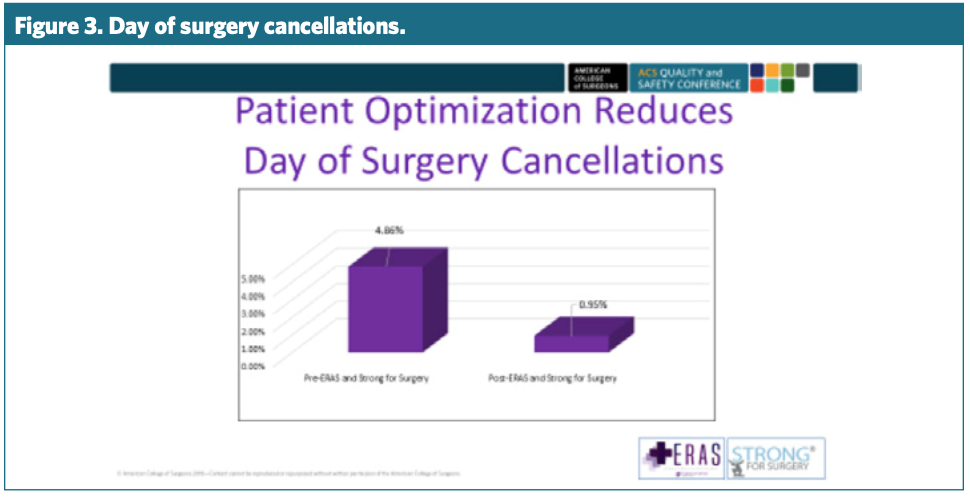How Was the Quality Improvement (QI) Activity Put in Place?
Context of the QI Activity
CSMHS is a faith-based, community, not-for-profit, 354-bed acute care facility located in Texarkana, TX. The service area is predominately rural and serves 13 counties in Northeast Texas, Southeast Oklahoma, and Southwest Arkansas.
The Quality Department team for CSMHS attended the annual ACS Quality and Safety Conference, and through the conference sessions we gained a better understanding of ERAS principles and S4S guidelines. We brought these concepts back to our community and began to implement these two programs within our hospital.
We gathered information on successful ERAS programs across the nation, and in 2016, a colorectal ERAS program was approved as a process improvement project for our hospital. It became apparent to us, through this project, that using a preoperative clinic within the hospital would serve as a gateway for the ERAS program and would also help to ensure the principles were properly implemented. Once the original S4S guidelines were published, they were added to our program and the preoperative clinic was underway.
Planning and Development Process
We introduced the ERAS principals to the team at our initial meeting in September 2016. Shortly after this meeting, we began to develop the ERAS algorithms and measurements. We completed the preoperative, intraoperative, and postoperative algorithms by February 2017.
We hired our preoperative clinic nurse practitioner in early 2017, and by April 2017, we began piloting ERAS on colorectal surgeries. We also introduced the nutrition, blood sugar, medication, and smoking S4S checklists to the team and finalized our program logo and education booklet. During this time, our Surgeon Champion (SC) began providing education on ERAS and S4S guidelines to the community surgeons and hospital staff.
Our “go live” date occurred in June 2017, with ERAS colorectal and the first four checklists for S4S. We began to track the ACS NSQIP/ERAS variables for colorectal surgery. When the ACS began using the S4S checklists for delirium, prehabilitation, safe and effective pain control, and patient directives, we added those to our practice as well.
Early in 2018, we began planning for ERAS orthopaedic surgeries and for the integration of ERAS with the Improving Surgical Care and Recovery (ISCR) program. By October 2018, we implemented orthopaedic ERAS /ISCR on knee replacement, hip replacement, and hip fractures. The team is currently in the implementation stage of the ERAS/ISCR gynecology guidelines.



